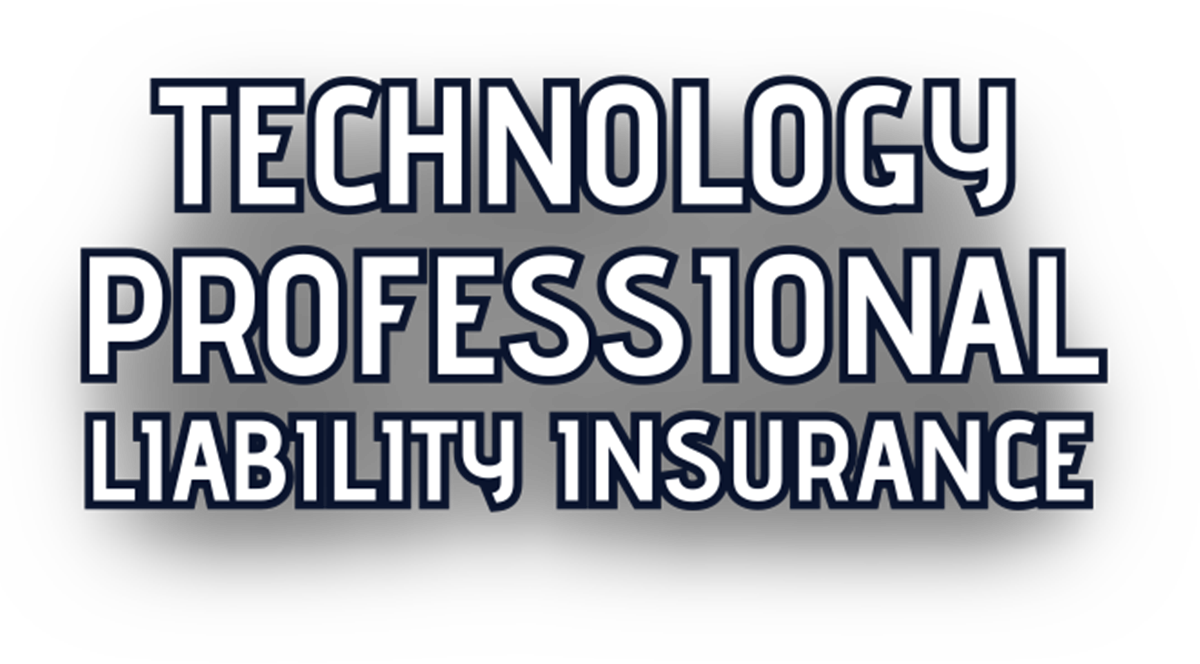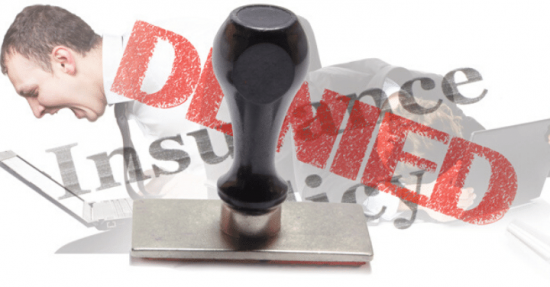TECHNOLOGY PROFESSIONAL LIABILITY INSURANCE
Technology errors and omissions insurance (tech E&O), known also as Professional Indemnity Insurance, provides coverage when you’re accused of negligence, mistakes, or oversights. It also covers data breaches that affect your business or a client’s operations.
What is an errors and omissions insurance?
Client contracts often require errors and omissions insurance, also known as professional liability or Professional Indemnity insurance. This policy protects you when a client sues over professional negligence, such as an error or oversight.
For example, a project manager could have hired a key contractor who had to leave a project due to illness. When the project sails past its deadline, the client sues the project manager. The client lost profits when the work ran late, and they’re trying to get that money back.
Your E&O policy will pay for your legal defense and whatever it takes to resolve the case, be it a settlement, judgment, or fines.
E&O insurance protects your company when a client sues over:
You don’t need to do anything wrong to face an E&O lawsuit. A client might view it to try and recover a financial loss. That’s why E&O coverage is so important for tech professionals, even those who think they don’t need insurance.
- Errors or oversights
- Undelivered professional services
- Missed deadlines
- Budget overruns
- Incomplete work
- Breach of contract
- Poor advice
Does E&O also cover media and intellectual property (IP) rights?
E&O for tech companies can also cover lawsuits over copyrights and other intellectual property rights, but it usually must be added to your policy. You can also add media liability insurance, which covers lawsuits related to the content you create (ads, social media pages, websites, etc.).
Tech E&O insurance includes two policies
Technology E&O is an insurance bundle designed specifically for tech companies. It includes
a. errors and omissions insurance and
b. cyber liability insurance
Causes of data breaches include:
- Malware and viruses
- Phishing scams
- Application vulnerabilities
- Weak passwords and other employee errors
- Insider attacks
First-party cyber liability coverage helps pay for:
- Notifying affected customers
- Data recovery
- Damage control, like a PR campaign
- Credit and fraud monitoring services for affected customers
- Data breach source investigations
- Ransom demands from cyber extortion
Companies that only need first-party cyber coverage can often add it to their general liability insurance policy.
Third-party cyber liability insurance
Third-party cyber liability insurance covers data breaches on clients’ systems that you worked on or for which you are responsible. IT consulting businesses, cybersecurity businesses, and other companies that recommend software or manage network security should buy this policy.
For example, say an IT consultant advises a client to move their customers’ personal information to a new database. A hacker breaks into the database and exposes customer data, including credit card numbers. The client might sue the consultant to recover costs of dealing with the breach.
In a situation like this, a third-party cyber liability policy would cover your legal defense up to the policy limits. That includes:
- Attorney’s fees
- Court-ordered judgments
- Settlements
Third-party cyber coverage is also crucial for providers of technology services or software. For example, say a retailer depends on your software for customer transactions. If it goes offline, so does their business. The retailer might sue to try and recover from the business interruption.
How much does tech E&O coverage cost?
The cost depends on:
- Your profession’s level of risk
- The policy limits you choose
- The Geographical area you want to be covered
- The jurisdiction area you want to be covered
- The deductible amount you choose
- Your past claims history
What other business insurance does your tech company need?
A tech E&O policy covers the two biggest risks of information technology, client lawsuits and computer system security. But business owners face many other risks. You should also consider:
- Commercial general liability insurancefor third-party claims of bodily injury or property damage.
- Business owner’s policy(BOP) for business property protection combined with general liability.
- Employers Liability Insurance for any business that has employees.
Common IT errors and omissions that cause lawsuits
Your business could be held liable for an errors and omissions (E&O) lawsuits and may include:
- Errorsare mistakes that IT professionals make, such as a bug in a software developer’s code (coding errors)
- Omissions are instances of incomplete work or failure to prevent an undesirable outcome, such as sending unencrypted data that is intercepted by cybercriminals.
- Forgetting to train clients in software and hardware security settings and use
- Rushing or skipping the quality assurance process when developing software
- Recommending substandard software or hardware
- Enabling a data breach or responding to an incident too slowly
- Failing to encrypt data in storage or transit
- Designing a website or application that is not accessible to persons with disabilities
- Missing deadlines or violating other contract terms
- Poor advice
- Negligence
- Undelivered work
- Work that didn’t meet expectations
- Breach of contract
Can E&O disclaimers help prevent a lawsuit?
Some IT businesses and website operators use disclaimers to reduce their E&O lawsuit risks. Disclaimers can help your business reduce risks, but they do not offer bulletproof protection against lawsuits.
IT liability disclaimer examples include:
- A medical website disclosing to consumers that information is not intended to replace professional health care advice or treatment
- A web hosting businessnotifying consumers that it is not responsible for data breaches at customer websites
- An online stock trading platform warning that past successful client investments do not predict future results
If you decide to add a disclaimer to your contract, product, or website, make sure to consult with an attorney to craft a message that is specific to your business and situation. Companies have been sued for placing disclaimers on web pages that few users visit, so make sure they are easily visible.
Protect your IT business with errors and omissions insurance
Disclaimers and meticulous work can help you reduce the risks of an E&O lawsuit. But you still need E&O insurance coverage to protect your company if a third party does sue you for professional negligence. Additionally, if a client could sue your business for negligence in failing to prevent a data breach or cyberattack, you should also consider cyber liability insurance. This policy is often bundled with E&O in a package called tech E&O. Cyber liability insurance is a must-have for tech companies
If your insurer does not offer tech E&O, you should strongly consider purchasing cyber liability insurance as a standalone policy.
Cyber liability insurance protects against data breaches. It covers the cost of notifying affected customers and providing them with credit monitoring services. Cyber liability policies also cover attorney’s fees, court costs, and damages if a client sues you for failing to prevent a breach that affects their business.
There are two types of cyber liability insurance:
- First-party cyber liability insurance protects your own data. IT businesses that store sensitive client or customer information like credit card numbers will want this coverage.
- Third-party cyber liability insurance protects your clients’ data. If cybercriminals hack a server, you are responsible for and steal client data, you can be held liable for damages.
Standalone cyber liability insurance policies include both first-party and third-party coverage.
Who needs errors and omissions insurance?
A. Computer and Hardware
- Manufacture and / or sale of own hardware
- Distribution / re-sale of third party branded hardware
- Installation
- Maintenance/repair/service
B. Software product sales
- Sales of own brand shrink wrapped / off the shelf software:
- Distribution of other brand shrink wrapped / off the shelf software
- Customizable software:
C. Software services
- Installation, including configuration (no coding involved)
- Customization (including coding changes)
- Maintenance
- Systems integration
- Development
- End user applications
D. IT Services
- Consultancy
- IT staffing
- Support services
- Project management
E. IT Training
- Data processing
- Data communication services
- Internet service provision or hosting provided by you
- Internet service provision or hosting provided by a third party
- Application service provision
F. Web Services
- Web Design
- Web hosting
- Web Development
G. Other IT work
- App Development
- Cybersecurity Consulting
- Network design
- Project Management
- SEO & SEM
- Telecommunications
- Data Architecture
- Digital Marketing
- Data Analysis
- Business Intelligence
E&O coverage protects you and your clients
Many clients will also want to make sure you’re covered before signing a contract with you.
Having an E&O policy protects both you and your client from financial loss. If something goes wrong, your insurance company will cover the client’s losses.
Does your company handle data? You likely need tech E&O
A data breach or cyberattack can have a serious impact on your bottom line.
Massive breaches get the most attention, but small businesses aren’t immune from the risk. Small and medium-sized businesses have been the victims of 28% of all data breaches in 2020.
That’s why small tech companies should seriously consider technology errors and omissions insurance (tech E&O) as well. It combines the benefits of an E&O policy with the added protection of cyber liability insurance.
Cyber liability insurance comes in two forms: first- and third-party coverage.
Companies at risk of data breach lawsuits look to third-party cyber insurance
If you store client or customer data on your servers, first-party cyber liability insurance should be at the top of your list. This coverage will pay for:
- Cyber extortion ransoms and legal fees
- Customer notifications
- Credit monitoring services or anti-fraud protections
- Crisis management services
- Costs of investigating the attack
Companies at risk of data breach lawsuits look to third-party cyber insurance
Third-party cyber liability insurance can help pay your legal costs if a client holds you responsible for compromised data. It will cover the cost of:
- Hiring an attorney
- Settlements
- Court-ordered damages
- Regulatory investigations
- Fines and penalties
Tech E&O includes both first-party and third-party cyber coverage – along with everything that errors and omissions insurance offers. It’s the ideal package for most tech pros.
Who benefits the most from tech E&O?
- IT consultants
IT consultants recommend new software for clients, help put it in place, and train people how to use it. If something goes wrong with that software or it doesn’t help the client in the way expected, the client could sue the consultant for lost time and resources, or to recoup fines or other costs. If a data breach happens in a cloud service that you recommended, for instance, your client could sue you for putting their data at risk. Tech errors and omissions insurance will help with costs associated with a lawsuit if a client isn’t satisfied with your professional advice.
- Data scientists
Data scientists process information and provide data-driven insights for their clients. Clients rely on that advice to chart the course of their business. But if a client makes a decision that doesn’t turn out as expected, they could blame the data scientist for the results – even if it wasn’t their fault. If the data scientist doesn’t have tech E&O insurance, they’ll be left to pay for all the legal expenses and damages on their own.
- Cybersecurity professionals
Cybersecurity professionals protect their clients from cyberattacks. If an attack happens, clients could sue the cybersecurity company for not adequately protecting them or acting fast enough to minimize the security breach. A technology errors and omissions insurance policy would pay for legal costs and any kind of settlement or judgment from a lawsuit.
- Digital Agencies and other tech professionals
Your clients come to you as an expert in your field and they have certain expectations. But even a capable professional can run into unexpected problems or give advice that doesn’t pay off. Let’s say you run a digital marketing agency. A client comes to you looking for help organizing their contact database. You recommend a new CRM and marketing automation software for the client and help them make the switch. A year later, the client decides the new software was a waste of money and sues you for negligent advice.
If you have E&O, your insurer will cover your legal defense costs as long as they’re within your policy limits. That includes settlements, court costs, judgments, and whatever else it takes to resolve the suit.
How much E&O coverage do you need?
The most popular policies have a €1 million per-occurrence limit and a €1 million aggregate limit. Boosting those limits means more coverage.
Make sure to keep this policy active. It’s a claims-made policy, which means you can’t cash in on a claim unless both the incident and the claim happen while the policy is active.
Remember, the cost of being sued when you don’t have errors and omissions coverage is much more than what you’ll pay in premiums.
E&O should be one of the first things you discuss with your insurance broker (right after general liability coverage) when starting a business.
Do you still need an E&O insurance policy if you’re careful?
You don’t have to be guilty of negligence or bad work for errors and omissions insurance to make sense. If an unhappy client makes a false accusation and sues, you’ll still have to pay a lot in legal fees to defend yourself in court.
That’s why you should consider this coverage even when it’s not required. No tech company is immune to liability claims.
If you’re not sure which type of insurance policy you need, Insurancelink professionals can help you find the right coverage.
Give us a call to discuss your IT E & O Insurance needs
Clarification
The information above may vary from Insurance Company to Insurance Company. Depending on the Insurance plan we will propose, we will give you all the relevant information required by the legislation so you can make your decision. Ask us today for an offer and, we will choose the most suitable package for your needs and budget.









